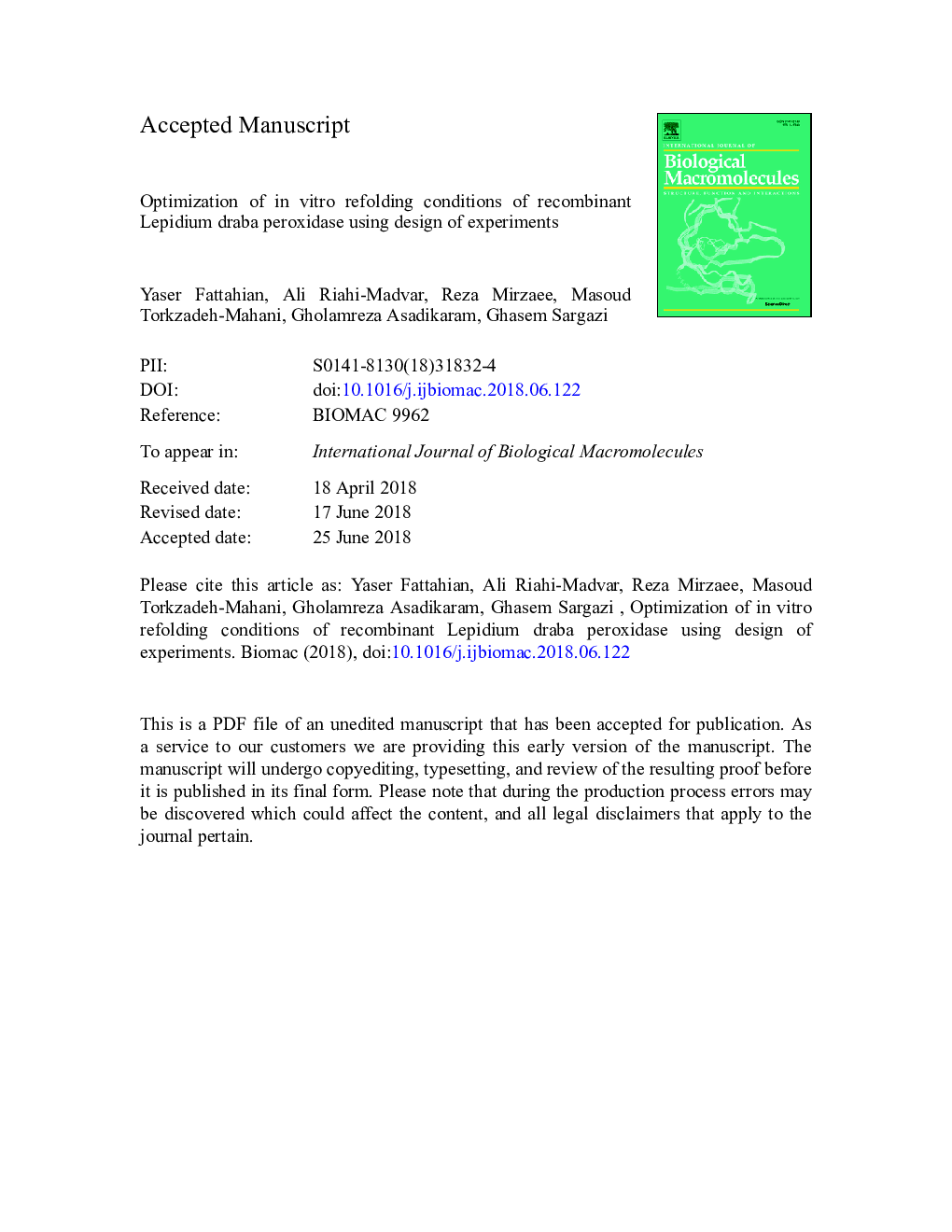| Article ID | Journal | Published Year | Pages | File Type |
|---|---|---|---|---|
| 10156827 | International Journal of Biological Macromolecules | 2018 | 35 Pages |
Abstract
The main objective of this study was to optimize the in vitro refolding conditions of the recombinant Lepidium draba peroxidase (LDP). Initially, the effects of various factors were investigated on LDP refolding yield using one-factor-at-a-time (OFAT) method. Based on the OFAT results, optimum concentrations for LDP refolding were 2â¯M urea, 2â¯mM CaCl2, 0.42â¯mM l-glutathione oxidized (GSSG), 0.20â¯mg/ml protein, and 12â¯Î¼M hemin as well as pHâ¯7. Secondly, according to the OFAT results, design of experiments (DOE) was applied for investigation of the interactions between factors including protein (P), urea (U), CaCl2 (C), and GSSG (G). The results showed the possible interaction between PC, PG, PU, and GU. Lastly, response surface methodology (RSM) was used for final refolding conditions optimization. The final optimized refolding conditions for LDP were conducted as 2â¯M urea, 1â¯mM CaCl2, 0.70â¯mM GSSG, 0.07â¯mM DTT, 0.15â¯mg/ml protein which they obtained from RSM results and 12â¯Î¼M hemin, and pHâ¯7 according to the results of OFAT method. Overall, under optimal conditions, 23.4â¯mg active refolded LDP per liter of expression medium was obtained. So, the refolding yield was calculated to be approximately 48%.
Related Topics
Life Sciences
Biochemistry, Genetics and Molecular Biology
Biochemistry
Authors
Yaser Fattahian, Ali Riahi-Madvar, Reza Mirzaee, Masoud Torkzadeh-Mahani, Gholamreza Asadikaram, Ghasem Sargazi,
